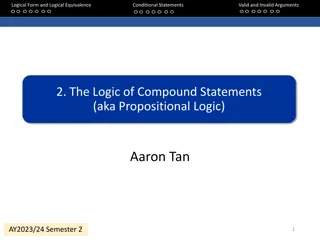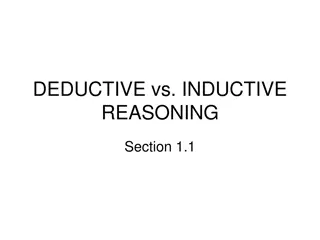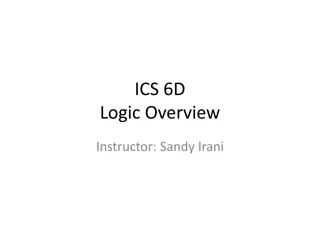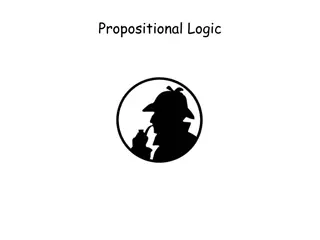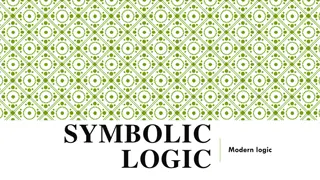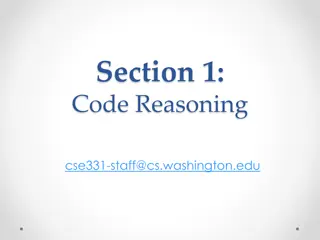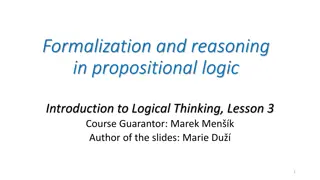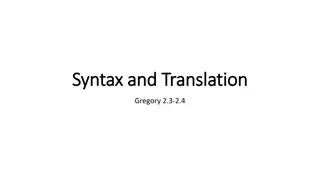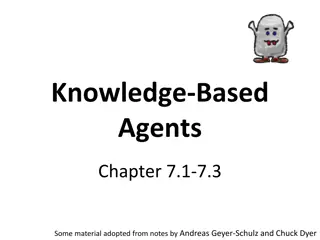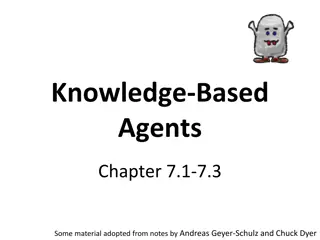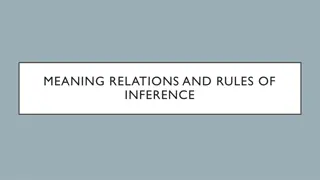Understanding Laws of Logic and Logical Reasoning
Laws of logic play a crucial role in reasoning and making deductions. This comprehensive guide explains the use of contrapositives, examples of conditional statements, and the significance of laws like the Law of Syllogism. Understanding these principles helps in effectively analyzing statements and drawing logical conclusions. The concepts of contrapositives, inverse, converse, and logical equivalences are elucidated, giving insight into how logical reasoning operates.
Download Presentation

Please find below an Image/Link to download the presentation.
The content on the website is provided AS IS for your information and personal use only. It may not be sold, licensed, or shared on other websites without obtaining consent from the author. Download presentation by click this link. If you encounter any issues during the download, it is possible that the publisher has removed the file from their server.
E N D
Presentation Transcript
Section 3.3 Using Laws of Logic
Using contrapositives The negation of a hypothesis or of a conclusion is formed by denying the original hypothesis or conclusion. Statement Symbol Negation Symbol The weather is good. P The weather is not good. ~p I will go swimming. q I will not go swimming. ~q The inverse of the conditional statement p q is ~p ~q. The contrapositive of the conditional statement p q is ~q ~p.
Examples: Original Statement: p If Polly says Hello , then Paul says Hello. q Hypothesis, p conclusion, q Converse: q If Paul says Hello then Polly says Hello. Inverse: ~p ~q If Polly does not say Hello then Paul does not say Hello. Contrapositive: ~q If Paul does not say Hello then Polly does not say Hello. p ~p
Ex: Statement: Tomorrow is Friday, if today is Thursday Conditional: If today is Thursday, then tomorrow is Friday (True) Converse: If tomorrow is Friday, then today is Thursday. (True) Inverse: If today is not Thursday, then tomorrow is not Friday. (True) Contrapositive: If tomorrow is not Friday, then today is not Thursday. (True)
Ex: Statement: A figure is a parallelogram if it is a square Conditional: If a figure is a square, then it is a parallelogram.(True) Converse: If a figure is a parallelogram, then it is a square.(False) Inverse: If a figure is not a square, then it is not a parallelogram.(False) Contrapositive: If a figure is not a parallelogram, then it is not a square.(True)
Summary Statement If p, then q. Converse If q, then p. Inverse If not p, then not q. Contrapositive If not q, then not p. An important fact to remember about the contrapositive, is that it always has the SAME truth value as the original conditional statement. **If the original statement is TRUE, the contrapositive is TRUE. If the original statement is FALSE, the contrapositive is FALSE. They are said to be logically equivalent.
Laws of Logical Reasoning Law of Syllogism (like transitive property) If p then q, if q then r therefore if p then r p q q r Therefore, p r Ex: If today is Tuesday, then I have gym. If I have gym, then I wear my sneakers. Conclusion using law of syllogism: If today is Tuesday, then I wear my sneakers.
Laws cont. Law of Detachment(orderingsteps to reach conclusion) p q P is true Therefore, q is true Ex: Given <1 = 50 A) if <1= 50 , then <2= 40 B) if <3= 40 , then <4= 140 C) if <4= 140 , then <5= 140 D) <1 = 50 E) if <2= 40 , then <3= 40 Solution: order of steps D,A,E,B,C Conclusion using law of detachment: <5 = 140


